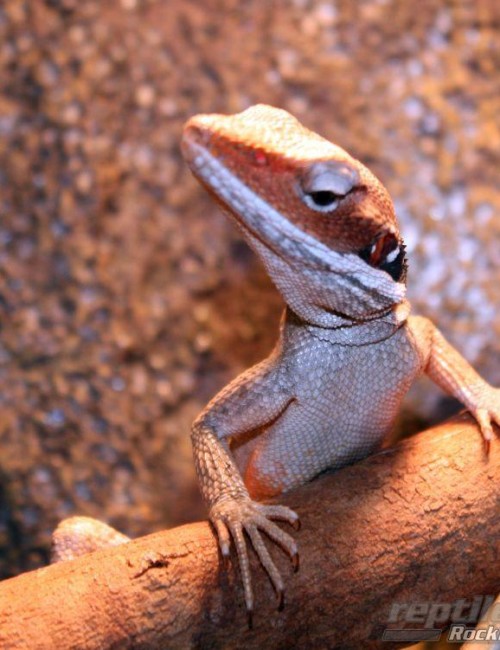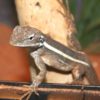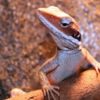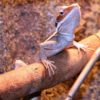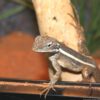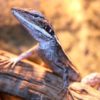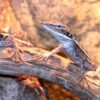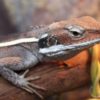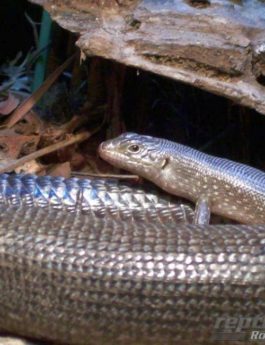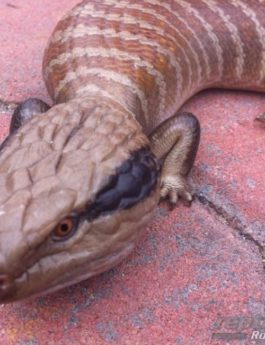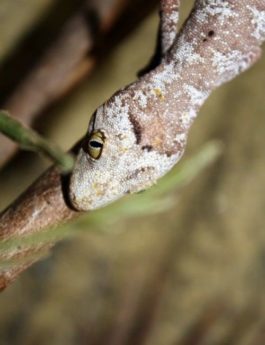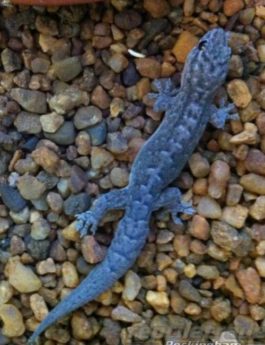Seven moderate sized sub species with long limbs and tails and 1-5 crests of slightly enlarged to spinose scales. On some sub species the nuchal and vertebral crests can be raised. Tympanum exposed. Pores present but relatively few. Pattern usually includes 2 broad pale dorsal stripes or series of blotches. Partially arboreal, often perching on trunks and limbs. These swift, alert dragons run on hind-limbs when alarmed. Amphibolorous Longirostris: SVL 114mm Slender and long limbed, with long snout and 1 moderately high nuchal crest continuous with vertebral row of enlarged scales. Tail extremely long, more than 3 times SVL. Dorsal scales uniform, their keels converging back towards midline. Grey to reddish brown with prominent pale dorsolateral stripes discontinuous or narrowly continuous with pale stripes along lower jaw. A black patch behind each ear encloses a white spot. A series of short, dark reddish brown dorsal bars and narrow pale mid-lateral stripe often present. Adults have 3 prominent orange spots down each side of belly.
Terrestrial and arboreal, favouring elevated perches such as low vegetation, stumps, fence posts or rocks. Extends through a variety of dry sclerophyll forests, woodlands, coastal dunes and heathlands.
Terrarium: there are several terrariums of different sizes available, the required size will vary based on number of and age/size of the Ta Ta Dragon. Terrariums should be large enough to maintain a correct thermal gradient in ambient air temperatures, this means that the Monitor can regulate its body temperature throughout the enclosure. For a single average size mature Dragon, we wouldn’t recommend anything smaller than 90x45x60cm (WxDxH), and for a pair of adult Ta Ta Dragons we would recommend a terrarium size of 120x60x60cm (WxDxH) as there needs to be enough room for them to chase their food and have their own basking spots.
Lighting & heating: Long-Nosed TaTa Dragons are a ‘Day Active’ lizard, meaning they are Diurnal and therefore require high spectrum UVB lighting as well as an intense basking heat source. There are a number of ways to provide UVB, fluorescent 10.0 spectrum tubes or bulbs will provide UVB, a ‘daylight basking’ heat globe will have to be used in conjunction. A mercury vapour globe will provide intense UVA & UVB light, mercury vapour globes are in our opinion superior to fluorescents as it is a longer lasting globe with more intense UVB output, however they cannot be used with a thermostat so work better with a larger enclosure that will easier maintain a thermal gradient. During the day, you want to achieve a basking ‘Hot Spot’ of 38°C and an air temperature ranging from 38°C in the hot end, and down to 25°C in the cool end. A heat rock or heat tile should be provided as tummy heat to help with digestion, this can also be used as a night time heat source. To monitor the temperatures inside the enclosure a thermometer should always be used.
Furnishings: an elevated basking area can be provided using logs, vines or hammocks. Artificial foliage throughout the enclosure will allow the Dragon plenty of hiding spots and coverage, a water bowl placed in the cool end, and red sand kept at the correct moister is our recommended substrate.
Food in captivity: Ta Ta Dragons will eat mostly crickets, wood roaches and silk worms in captivity as they are primarily insectivores. Some will take to eating an appropriate variety of fruits and vegetables as well as insects. Food items will need to be dusted with calcium and vitamin supplements.
The essentials:
- Terrarium of appropriate size
- High spectrum UVB lighting
- Daytime Basking globe
- Thermometer
- Ground heat
- Water bowl
- Substrate
- Branches/Vines
- Foliage for shelter
- Calcium and vitamin supplements

